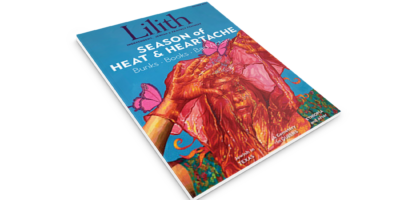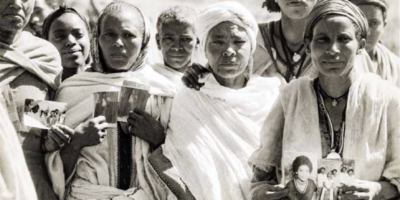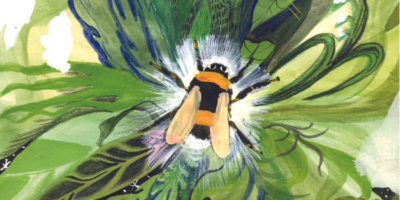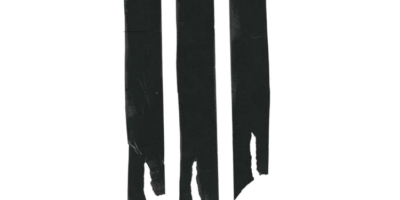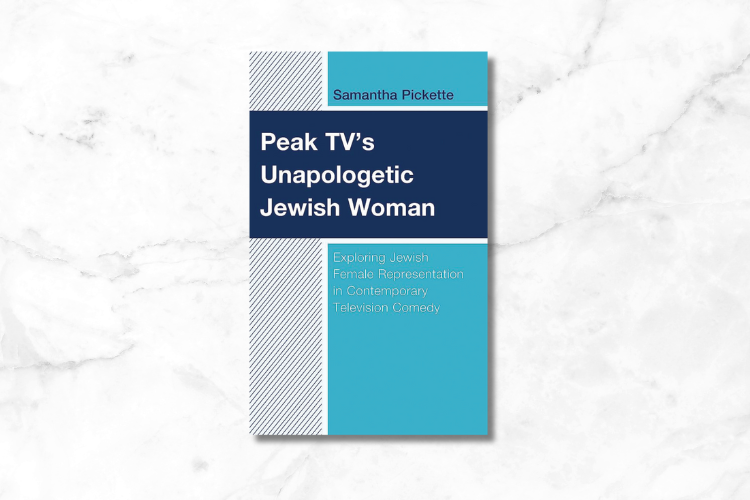
Jewish Women on Golden Age TV
In my social media set, reactions to Jewish representation on TV tend toward the binary: folks either kvell about a prominent Jew onscreen, expressing gratitude to gain any glimpse of themselves, or lambast the very same for embodying tired stereotypes. As a Jewish feminist who has written about how Jews are represented in contemporary film, I was eager to read Samantha Pickette’s take on the recent population explosion of Jews on TV.
Peak TV’s Unapologetic Jewish Woman: Exploring Jewish Representation in Contemporary Television Comedy (Lexington Books, ebook $45, Hardcover $100) did not disappoint. Although it’s an academic study, it’s chock full of gems that will add to communal debates about such shows as Crazy Ex-Girlfriend, The Marvelous Mrs. Maisel, Broad City, and Transparent. The author’s willingness to embrace subtlety and ambivalence is particularly pronounced in her chapter-length argument about The Marvelous Mrs. Maisel.
She reads the title character as a contemporary depiction superimposed on 1950s America. However, as Pickette observes, Maisel’s Big Jewish Mouth, which likely thrills some Lilith readers and leaves others wanting, is developed through the foils of her mother Rose and her ex-mother-in-law Shirley, both stereotypes (Pickette reminds us that “Shirley” is the term used for Jewish women conformists in Herman Wouk’s 1955 Marjorie Morningstar).
Just as importantly, while Midge Maisel is represented as getting a little help from the self-destructive Lenny Bruce, “the series ignores the legacy of other female comics from the 1950s and 1960s.”
This book is full gems that will add to debates about such shows as Crazy Ex-Girlfriend, The Marvelous Mrs. Maisel, Broad City, and Transparent.
This is galling when one considers that Maisel creator Amy Sherman-Palladino (also the creative force behind Gilmore Girls) knows this history and credits Joan Rivers with being a model for Midge.
While many have gnashed their teeth that Maisel is played by the non-Jewish Rachel Brosnahan, Pickette invites us to relish Midge’s fearless self-expression AND to reflect on the limits of representing Midge as going it alone, except for the company of her butch manager Susie. Pickette astutely notes that Susie’s Jewishness and queerness are relatively unexplored. As I was reading, I wondered what Pickette would have to say about the finale of the series, which is focused on Susie and which aired well after the publication of Peak TV’s Unapologetic Jewish Woman.
For Pickette, Broad City represents the positive development of the Unapologetic Jewess, a broad who “defies the social conventions of adult respectability, violates the boundaries of feminine decorum in her displays of masculine incivility, and undermines the guiding principles of Judaism despite her overt claims to a self-defined and undeniable Jewishness.” As likeable and relatable failed adults whose friendship undermines conventional romantic scripts, Ilana and Abbi revise the tradition of the schlemiel.
I confess that I’m not totally convinced by Pickette’s argument here—in part because I’m not sure that “quasi activism” that is “ineffective and self-serving” is all that positive or different from the self-
involved and clueless Jewess stereotypes that permeate popular culture. But as a result of Pickette’s commentary, I intend to rewatch Broad City, and I can think of no greater compliment to pay a media critic.
In Orange is the New Black, And Just Like That, Transparent, The Russian Doll, and Frankie and Grace, Pickette argues that images of Jewish women and Jewish mothers have become refreshingly diverse. One of many delights here is her reading of Frankie and Grace as portraying “Jewishness not as another form of otherness but rather as a site of positive difference.” Pickette convincingly makes the case that Frankie’s “kookiness” ultimately “emphasizes the tie between Jewish values and social justice.” To account for the development of such progressive representations, Pickette turns to media history and the shift from network control over TV to the development of streaming platforms. She also credits the creative energy and commitment to self-expression of the “Jewish women and non-binary Jews” running many of these shows.
Pickette adopts a case study approach and focuses on comedy, which means that many recent dramatic (and sometimes melodramatic) representations of Orthodox Jews are not included. And although this topic certainly has huge crossover appeal, Peak TV’s Unapologetic Jewish Woman has some hallmarks of an academic book, including dense block quotations and sentences of ten lines or more.
But the reader who can get past these academic tics will be rewarded with a Jewish feminist lay of contemporary TV land. And I think most readers will find themselves eager not only for the next generation of Jewish TV but also for Pickette’s commentary on it.
Helene Meyers is author of Movie Made Jews: An American Tradition.

